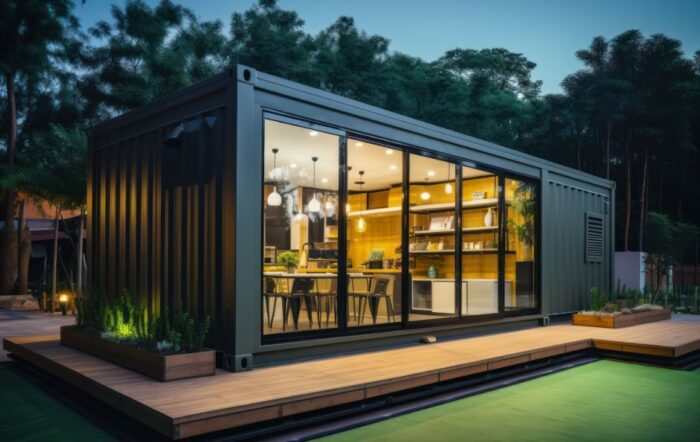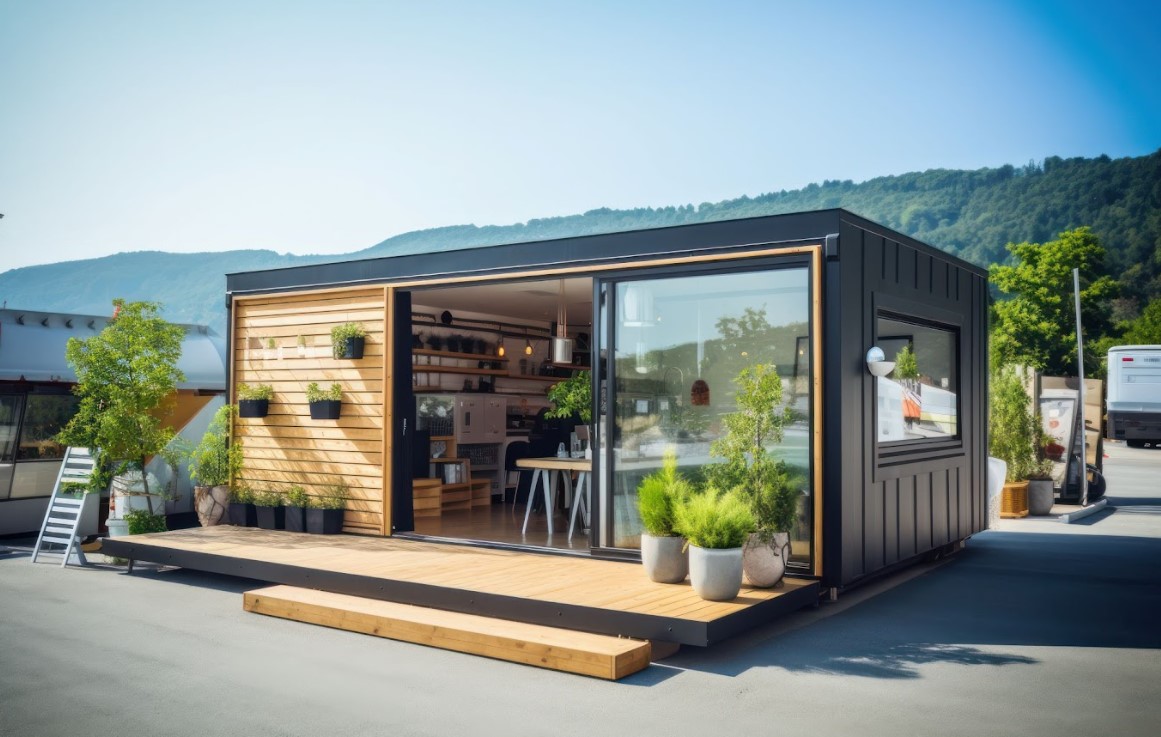Many people often wonder if it’s feasible to transform a 40ft shipping container into a garden room. Undoubtedly, the answer is a resounding yes. This endeavor successfully combines sustainability with innovative design. Breathing new life into this industrial structure is like an artist repurposing an abandoned canvas.
Turning a boring old shipping container into an eco-friendly garden room is an excellent solution that effectively tackles ecological concerns. If you’re unsure where to begin, sustainability can help you find your way. It can guide you in nurturing the container’s potential to evolve into a serene garden retreat.
A million thoughts might be racing through your head right now. But, like a skilled puzzler, you envision its form, merging aesthetics and function. You might think, ‘How about putting a fold-out table in a cozy corner?’ Should you opt for cacti or orchids? It’s almost funny how a 40ft transportable container can become a source of inspiration and comfort.
Imagine creating a cozy seating area by the window or displaying plants on shelves. The small size makes it easy to use the space wisely. Although your space is limited, the possibilities within it are truly boundless.
Here are a few ideas for transforming a shipping container into a charming garden room:
1. Planning And Designing
The planning and design phase is crucial when converting a shipping container into a garden room. Setting the tone for this project can help you lay a solid foundation to make it successful. Hence, organizing your plan is crucial. Committing to this project can guarantee that the garden room you design meets your needs, provides comfort, and fits in with your home and lifestyle.
Consider these steps:
- Select the appropriate container. Determine the available space on your property and choose a container size that fits well.
- Determine the garden room’s purpose and function. Consider whether it will be a workspace, a relaxation area, or a mix of the two.
- Examine the container for structural damage, paying close attention to the roof, walls, and corners.
- Check local building codes and regulations for compliance, and obtain any permits required for the conversion.
- Remove dust, dirt, or debris from the container’s interior surfaces.
- Plan the layout and features. Draw the desired layout, considering the placement of windows, doors, and interior partitions.
- If necessary, plan for electrical outlets, lighting fixtures, and ventilation.
A relaxing garden room may benefit from large windows overlooking a natural landscape. On the other hand, a combination of garden room and office space may require more electrical outlets and task lighting.

2. Preparing The Container For Conversion
Preparing the shipping container is essential in converting it into a functional garden room. You can start by checking the container’s structural integrity. Doing so allows you to spot potential issues, ensuring the container has a secure and durable foundation.
You can follow these suggestions:
- Clean and prepare the container. Use a power washer or scrub brush to thoroughly clean the container’s exterior to remove dirt, grime, and rust.
- Sand any rust spots before applying rust-resistant primer and paint.
- Cut openings for windows and doors. Measure and mark their desired locations.
- Install metal framing around the openings to reinforce the structure and provide a secure attachment point for windows and doors.
- Address ventilation needs. Install vents or fans to improve air circulation and prevent moisture accumulation in the garden room.
- Place the vents strategically to allow for efficient airflow without jeopardizing the container’s structural integrity.
A roof vent combined with adjustable vents near the floor and ceiling can provide effective cross-ventilation while maintaining a comfortable indoor environment.
3. Insulation
The shipping container’s insulation and interior finishing are crucial to transforming it into a cozy and habitable garden room. This phase can significantly impact the structure’s overall usability, energy efficiency, and ambiance.
Here’s how:
- Properly insulate the container. Select an insulating material, such as spray foam or rigid foam boards.
- Apply the insulation material to the interior walls, ceiling, and floor of the container, ensuring a snug fit.
- Seal all joints, seams, and gaps to prevent air leaks and maximize insulation efficiency.
- Cover the insulation with moisture-resistant drywall or plywood, securely fastened to the container’s interior frame.
- Consider using acoustic insulation materials in the walls and ceiling of the garden room to improve soundproofing.
- Choose flooring materials that are durable, easy to clean, and complement the overall design. Consider long-lasting vinyl plank flooring, laminate, or tile, which come in various styles and colors.
- Ensure the flooring is level and properly installed to avoid uneven surfaces.
Select wall coverings that complement the garden room’s desired aesthetic. Consider tongue-and-groove paneling for a rustic or cabin-like look. Choose smooth, white drywall for the interior walls for a modern and clean vibe.
4. Decorating And Furnishing
The last phase in turning a shipping container into an inviting living place is to furnish and decorate it. This step gives the garden room a personal touch.
Remember these tips:
- Select furniture appropriate for the size and layout of the garden room.
- Choose furniture that’s space-saving and multifunctional to maximize available space.
- To keep the garden room organized, incorporate storage solutions, like shelves, cabinets, or under-seat storage.
- Incorporate indoor plants and natural decor elements to create a garden-like ambiance.
- Introduce greenery and strengthen your connection with nature using planters, hanging pots, and vertical gardens. Hanging planters with trailing plants or a living plant wall can be lovely focal points in the garden room.
- Add visual interest and comfort by hanging artwork, photographs, or mirrors.
- Install soft lighting options, like string lights or floor lamps, to create a soothing atmosphere.
Personalize the space by decorating it with items that reflect your personality and tastes. You can display family photos, travel souvenirs, or handcrafted artwork.
Conclusion
Converting a shipping container is a creative project that shows how design has the power to change things in amazing ways. These techniques can help you turn a shipping container into a charming garden room with functionality, comfort, and a connection to nature. May your garden room be a testament to your resourcefulness and creativity.






